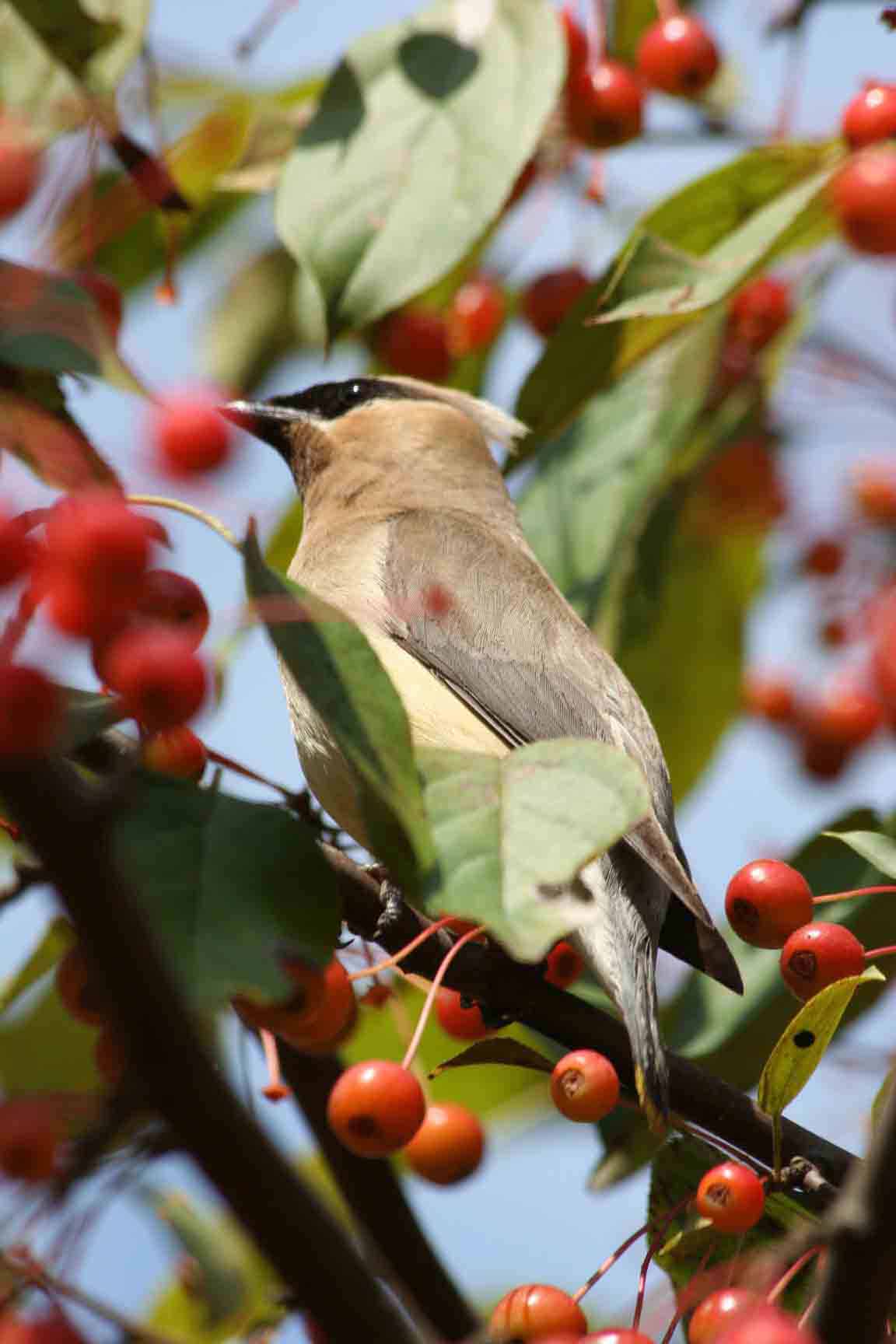Plan Your Weekend: Take a Guided Bird Walk
Posted in Programs and Events, Wildlife on January 23 2009, by Plant Talk
Colors of Cardinals, Ducks, and More Dazzle Against the Snow
 |
Debbie Becker leads a free bird walk at the Garden every Saturday from 11 a.m. to 12:30 p.m., beginning at the Reflecting Pool in the Leon Levy Visitor Center. |
 Winter birding at NYBG is always a delight. Once the deciduous trees have shed their leaves all is visible. Streaks of winter sun embrace the Forest and ignite the trees in deep silhouettes and wonderful brown hues. There is something about the frosty sunlight that brings out the vibrant color of the birds. The red-bellied woodpecker’s cap glows in red amber as the bird climbs a tree barking for attention. The northern cardinals are so brilliant in the sun as they sit on the bare branches—their red and orange feathers a sharp contrast to the white snow and brown tree stems. Even the blue jays’ cerulean feathers glow like a Matisse as the birds peck around the snow for morsels to eat.
Winter birding at NYBG is always a delight. Once the deciduous trees have shed their leaves all is visible. Streaks of winter sun embrace the Forest and ignite the trees in deep silhouettes and wonderful brown hues. There is something about the frosty sunlight that brings out the vibrant color of the birds. The red-bellied woodpecker’s cap glows in red amber as the bird climbs a tree barking for attention. The northern cardinals are so brilliant in the sun as they sit on the bare branches—their red and orange feathers a sharp contrast to the white snow and brown tree stems. Even the blue jays’ cerulean feathers glow like a Matisse as the birds peck around the snow for morsels to eat.
Perhaps the most spectacular sight in winter are the ducks on the Bronx River. White-and-crimson-orange hooded mergansers bob in the gentle flow of the river, their white heads parallel to the white snow on the river’s banks. The female with her spiked burgundy head is a sharp contrast and a delight to watch as she dives under the water searching for food.
Cedar waxwings dressed in yellow, red, and beige with a black mask pop yellow, red, and purple crabapples off the branches and into their beaks, making the perfect palette of color come alive.
Tiny black, gray, and white chickadees dance on the sweet gums’ brown sticky seed balls, pecking inside for the last of the autumn treat. Flocks of white-throated sparrows dance in the oak leaves on the ground, hopping back and forth in efforts to dislodge a hibernating spider from its berth. It is a well-choreographed movement that can be played in one’s mind to Beethoven’s Fifth.
One of the great joys of winter birding is hand-feeding chickadees. It is at this time of year that the chickadees, tufted titmice, and occasionally a cardinal are apt to land in one’s outstretched palm if you offer black oil sunflower seeds or roasted peanuts. The birds need the food for nourishment and to keep warm during the cold days of winter. Chickadee use a technique of shivering to keep their body temperatures high enough to survive and the protein from the sunflower and peanuts give them the fuel to perform the shivering technique.
Red-tailed hawks, Cooper’s hawks, and sharp-shinned hawks are also quite visible as they quietly sit on a branch waiting to pounce on their next victim.
In the quietness of the snow, in the shadows of the winter sun, the birds often reflect the silence of the season with a warm melody of song.
Check out Saturday’s programming
Check out Sunday’s programming

